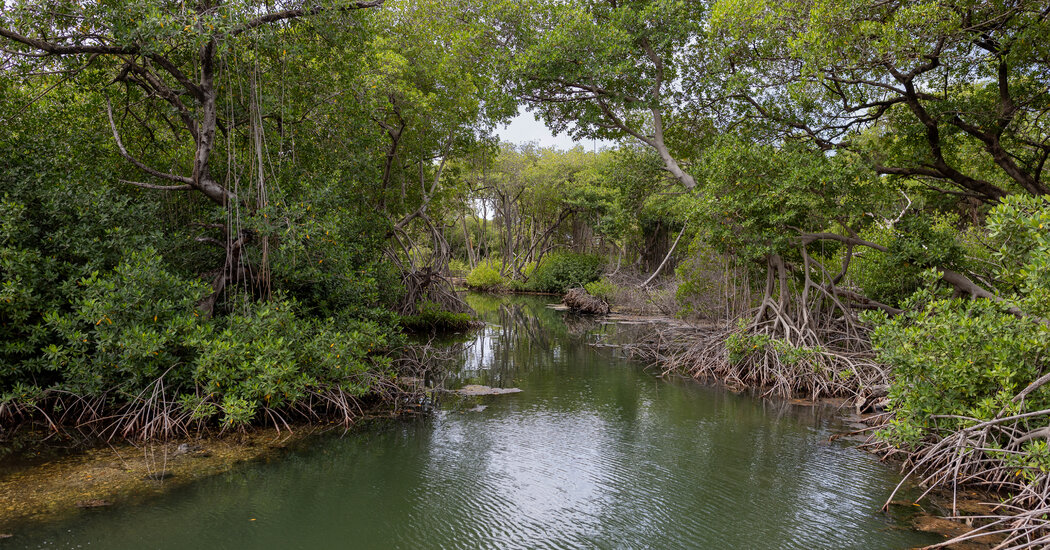It was a sunny afternoon in February at the height of the high season on the Caribbean island of Curaçao, but my partner, Aaren, and I were far from lounging on a white-sand beach, snorkeling over a coral reef or strolling among the Easter-egg-colored buildings of Willemstad, Curaçao’s capital and a UNESCO World Heritage site — typical activities for travelers to this former Dutch colony.
Instead, on a kayak tour with Serlon St Jago, a guide from the Curaçao Rif Mangrove Park, we were learning about the country’s mangrove restoration, and the vital role mangrove habitats play in coastal resilience, protection for marine and bird species, and fighting the effects of climate change.
No poisonous snakes, alligators or large predators live on Curaçao, Mr. St Jago said, reassuring information as we paddled toward a forbidding wall of mangroves lining Piscadera Bay. Up close, the trees were magnificent and cheerful. Colorful birds roosted on tangled branches and trunks, and small paths under the green and occasionally yellow leaves beckoned us to explore. With our kayaks beached, Mr. St Jago pointed out fiddler crabs and mussels, and described differences of the local mangrove species — the red, white and black — and how they adapted to live and propagate where water meets land.
“There’s so much life here,” he said with infectious enthusiasm.
We were the only tourists on the water, but getting more visitors like us interested in mangroves, perhaps even persuading them to replant some of the vital trees themselves, has been a priority of scientists, activists, park rangers and tourism operators on Curaçao in recent years.
The island isn’t alone in its efforts: Similar mangrove-focused work has started around the world, in places like Indonesia, Australia, Belize and Florida, as fragile destinations balance tourism’s growth with the conservation — and restoration — of the natural resources that captivate visitors.
“Coral reefs get all the attention. But mangroves are probably a lot more important,” said Gabby Ahmadia, a vice president with the oceans program at the World Wildlife Federation who overseas the organization’s mangrove science and restoration programs. “My favorite analogy about mangroves is that they are Swiss Army knives, because they do provide so many different benefits and they can do so many different things.”
Though these forests are one degree of separation from the sights and the activities that…
Click Here to Read the Full Original Article at NYT > Travel…
